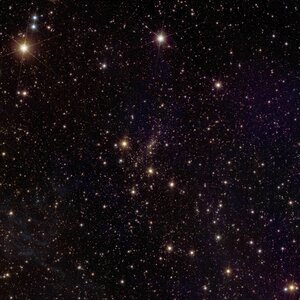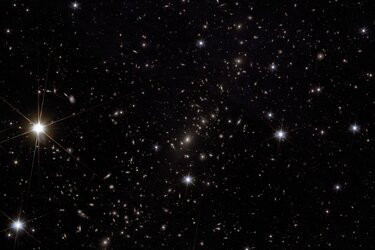Accept all cookies Accept only essential cookies See our Cookie Notice

About ESA
The European Space Agency (ESA) is Europe’s gateway to space. Its mission is to shape the development of Europe’s space capability and ensure that investment in space continues to deliver benefits to the citizens of Europe and the world.
Highlights
ESA - United space in Europe
This is ESA ESA facts Member States & Cooperating States Funding Director General Top management For Member State Delegations European vision European Space Policy ESA & EU Space Councils Responsibility & Sustainability Annual Report Calendar of meetings Corporate newsEstablishments & sites
ESA Headquarters ESA ESTEC ESA ESOC ESA ESRIN ESA EAC ESA ESAC Europe's Spaceport ESA ESEC ESA ECSAT Brussels Office Washington OfficeWorking with ESA
Business with ESA ESA Commercialisation Gateway Law at ESA Careers Cyber resilience at ESA IT at ESA Newsroom Partnerships Merchandising Licence Education Open Space Innovation Platform Integrity and Reporting Administrative Tribunal Health and SafetyMore about ESA
History ESA Historical Archives Exhibitions Publications Art & Culture ESA Merchandise Kids Diversity ESA Brand Centre ESA ChampionsLatest
Space in Member States
Find out more about space activities in our 23 Member States, and understand how ESA works together with their national agencies, institutions and organisations.
Science & Exploration
Exploring our Solar System and unlocking the secrets of the Universe
Go to topicAstronauts
Missions
Juice Euclid Webb Solar Orbiter BepiColombo Gaia ExoMars Cheops Exoplanet missions More missionsActivities
International Space Station Orion service module Gateway Concordia Caves & Pangaea BenefitsLatest
Space Safety
Protecting life and infrastructure on Earth and in orbit
Go to topicAsteroids
Asteroids and Planetary Defence Asteroid danger explained Flyeye telescope: asteroid detection Hera mission: asteroid deflection Near-Earth Object Coordination CentreSpace junk
About space debris Space debris by the numbers Space Environment Report In space refuelling, refurbishing and removingSafety from space
Clean Space ecodesign Zero Debris Technologies Space for Earth Supporting Sustainable DevelopmentApplications
Using space to benefit citizens and meet future challenges on Earth
Go to topicObserving the Earth
Observing the Earth Future EO Copernicus Meteorology Space for our climate Satellite missionsCommercialisation
ESA Commercialisation Gateway Open Space Innovation Platform Business Incubation ESA Space SolutionsLatest
Enabling & Support
Making space accessible and developing the technologies for the future
Go to topicBuilding missions
Space Engineering and Technology Test centre Laboratories Concurrent Design Facility Preparing for the future Shaping the Future Discovery and Preparation Advanced Concepts TeamSpace transportation
Space Transportation Ariane Vega Space Rider Future space transportation Boost! Europe's Spaceport Launches from Europe's Spaceport from 2012Latest
Euclid’s new view of galaxy cluster Abell 2764
Thank you for liking
You have already liked this page, you can only like it once!
This image is released as part of the Early Release Observations from ESA’s Euclid space mission. All data from these initial observations are made public on 23 May 2024 – including a handful of unprecedented new views of the nearby Universe, this being one.
This new view shows the galaxy cluster Abell 2764 (top right), a very dense region of space containing hundreds of galaxies orbiting within a halo of dark matter.
Euclid captures a range of objects in this patch of sky, including many background galaxies, more distant galaxy clusters, interacting galaxies that have thrown off streams and shells of stars, and a pretty edge-on spiral that allows us to see the ‘thinness’ of its disk.
This complete view of Abell 2764 and surroundings – obtained thanks to Euclid’s impressively wide field-of-view – allows scientists to ascertain the radius of the cluster and study its outskirts with faraway galaxies still in frame. Euclid's observations of Abell 2764, as with Abell 2390 (another target depicted in the images released today from the space telescope), are also allowing scientists to witness some of the most distant galaxies that lived in a mysterious period known as the cosmic dark ages. Euclid enables us to see these galaxies back when the Universe was only 700 million years old, just 5% of its current age. Viewing their light is a specialty of Euclid, and allows us to witness how the first galaxies formed.
Also seen here is a bright foreground star that lies within our own galaxy (lower left: V*BP-Phoenicis/HD 1973, a star within our galaxy and in the southern hemisphere that’s nearly bright enough to be seen by the human eye). When we look at a star through a telescope, its light is scattered outwards into the typical spiked shape due to the telescope’s optics. Euclid was designed to make this scatter as small as possible. As a result, we can measure the star very accurately, and capture galaxies that lie nearby without being blinded by the star’s brightness.
Abell 2764 lies around 1 billion light-years away in the direction of the Phoenix constellation.
Read more about the new data released as part of Euclid’s Early Release Observations, including a stunning set of five never-before-seen images: here
Explore this image in ESASky.
Explore this image at the highest resolution in ESASky.
[Technical details: The data in this image were taken in about three hours of observation. This colour image was obtained by combining VIS data and NISP photometry in Y and H bands; its size is 8200 x 8200 pixels. VIS and NISP enable observing astronomical sources in four different wavelength ranges. Aesthetics choices led to the selection of three out of these four bands to be cast onto the traditional Red-Green-Blue colour channels used to represent images on our digital screens (RGB). The blue, green, red channels capture the Universe seen by Euclid around the wavelength 0.7, 1.1, and 1.7 micron respectively. This gives Euclid a distinctive colour palette: hot stars have a white-blue hue, excited hydrogen gas appears in the blue channel, and regions rich in dust and molecular gas have a clear red hue. Distant redshifted background galaxies appear very red. In the image, the stars have six prominent spikes due to how light interacts with the optical system of the telescope in the process of diffraction. Another signature of Euclid special optics is the presence of a few, very faint and small round regions of a fuzzy blue colour. These are normal artefacts of complex optical systems, so-called ‘optical ghost’; easily identifiable during data analysis, they do not cause any problem for the science goals. ]
[Image description: A starry sky against a dark background. One star is big and bright and sits in the bottom of the image. In the upper right corner galaxies clump together. They look like small bright spheres and ellipsoids. Throughout the image, tiny bright dots and a handful of glowing spheres are distributed evenly.]
-
CREDIT
ESA/Euclid/Euclid Consortium/NASA, image processing by J.-C. Cuillandre (CEA Paris-Saclay), G. Anselmi -
LICENCE
CC BY-SA 3.0 IGO or ESA Standard Licence
(content can be used under either licence)

Euclid’s new view of bright star near Abell 2764

Closer Euclid view of Abell 2764

ESA's Euclid delivers first science results with spa…

Euclid’s new image of galaxy cluster Abell 2390















 Germany
Germany
 Austria
Austria
 Belgium
Belgium
 Denmark
Denmark
 Spain
Spain
 Estonia
Estonia
 Finland
Finland
 France
France
 Greece
Greece
 Hungary
Hungary
 Ireland
Ireland
 Italy
Italy
 Luxembourg
Luxembourg
 Norway
Norway
 The Netherlands
The Netherlands
 Poland
Poland
 Portugal
Portugal
 Czechia
Czechia
 Romania
Romania
 United Kingdom
United Kingdom
 Slovenia
Slovenia
 Sweden
Sweden
 Switzerland
Switzerland


























